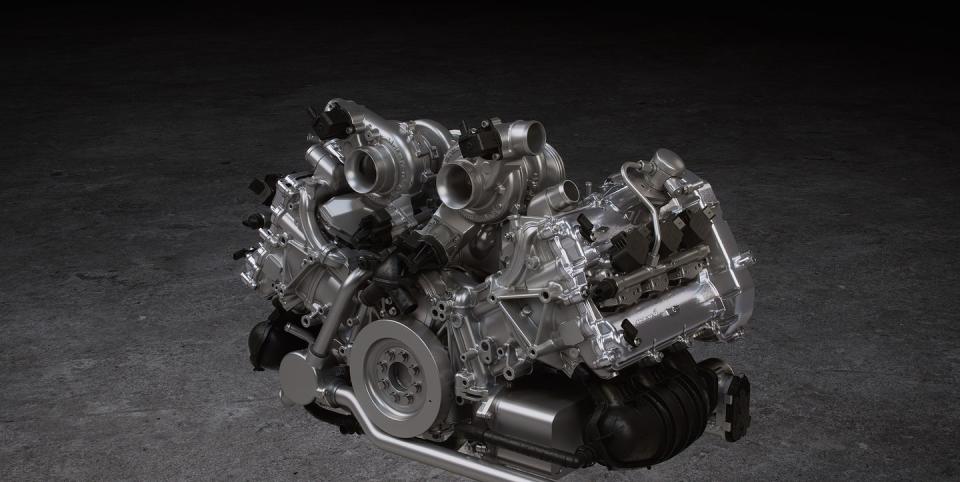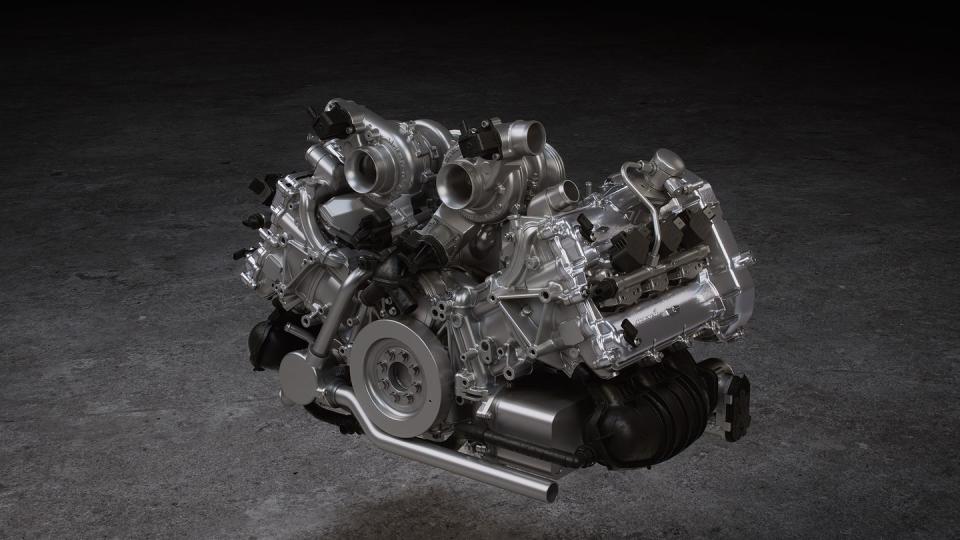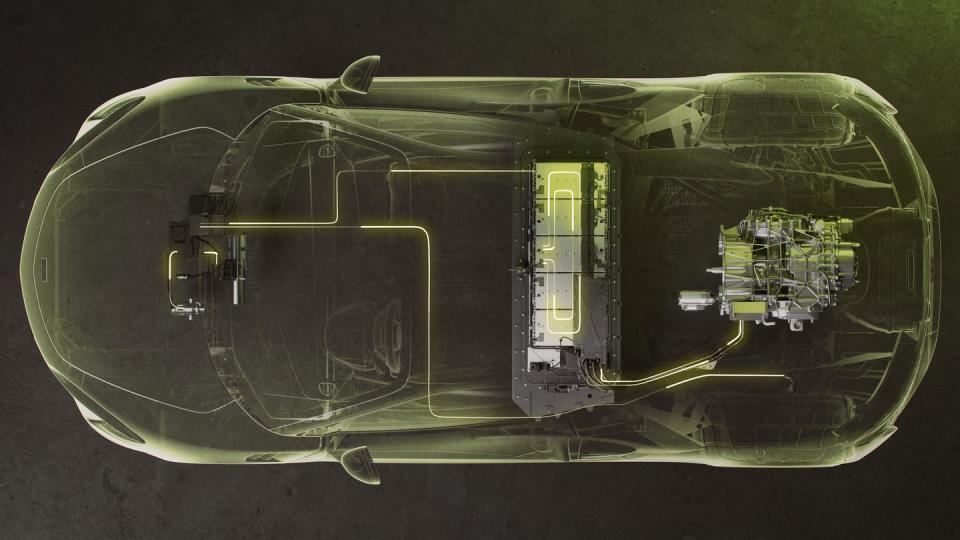The Bizarre V-6 in McLaren's Newest Supercar Is Unlike Any Other Engine

The McLaren Artura represents a big step forward for the supercar brand. A replacement for the 570S, the Artura is the first car on a new chassis designed specifically for a hybrid powertrain, and it marks the debut for the first engine McLaren has ever created in-house, a twin-turbo V-6 dubbed the M630. But while the Artura has to push forward into the future, embracing electrification and offering a significant step in performance over a 570S, it still has to be a McLaren, lightweight, feelsome, and approachable.
As chief engineer, Geoff Grosse is the man in charge of making sure the Artura achieves those aims. Before the launch of the new car, we spoke with Grosse to delve a little deeper into the engineering behind it. We didn't cover everything, instead, focusing on the new powertrain and the suspension. But even that will give you plenty to munch on.
Initially, a 3.0-liter twin-turbo V-6 doesn't sound all that interesting. We live in an era of engine downsizing, and a V is hardly a special way to arrange six cylinders, but this engine is quite unique. For starters, McLaren chose a 120-degree V-angle, which seems like an odd choice, given that a 120-degree V-6 isn't that much less wide than a flat-six and requires a balance shaft. Grosse says McLaren chose the 120-degree V-6 because it helps keep engine height (and therefore center of gravity) low, and because a flat engine was deemed too wide for the Artutra's new carbon-fiber platform. Plus, one imagines McLaren not wanting to barge in on Porsche territory.

"We're obviously known for having exceptional dynamics, and the foundation for that is our super stiff structure," Grosse says. "So, if we're going to have a big hole in the structure to put an engine in, we've got to think about the size of that, and how it integrates."
Grosse also points out that with a 120-degree V-6, each pair of connecting rods share one crankshaft journal, keeping the overall length of the crank short. Surprisingly, this 120-degree V-6 is narrower overall than the 90-degree V-8 McLaren has used in all of its cars since the 12C, as the Artura's engine adopts a hot-vee turbo setup. This popular design relocates the turbochargers from being placed at the sides of the engine to sitting within the valley of the V, helping reduce manifold length and thus decreasing turbo lag. "We've got this really direct pathway from the turbo straight out the back of the car. You almost feel like you can look down the tailpipe and see the turbine," Grosse says.
And while this is the first production-car 120-degree V-6, Ferrari used the same V-angle for the V-6 in the iconic 156 "Sharknose" Formula 1 car, and again in the Eighties for its first turbo F1 cars. It's an odd engine layout, but one that makes sense given McLaren's goals for the Artura, and presumably, the future production models that will use this engine.

As for why McLaren went for six rather than eight cylinders? The usual reasons of reduced emissions and improved fuel economy, but also to keep the overall engine package short as the Artura has an electric motor integrated within its new dual-clutch gearbox. McLaren uses it for what it calls torque infill, and its operation is similar to the e-motor used in the P1 hypercar. Essentially, the V-6 uses large turbos to achieve relatively high peak power, 577 hp, but that comes at the expense of turbo-lag and low-end response. The e-motor is then used to compensate, giving the Artura a broad torque curve and sharp throttle response. McLaren says the total system output is 671 hp and 531 lb-ft of torque. Peak power comes at 7500 rpm, but the engine spins to 8500 rpm because Grosse says you simply need to have high-revving theatre.

 Yahoo Autos
Yahoo Autos 